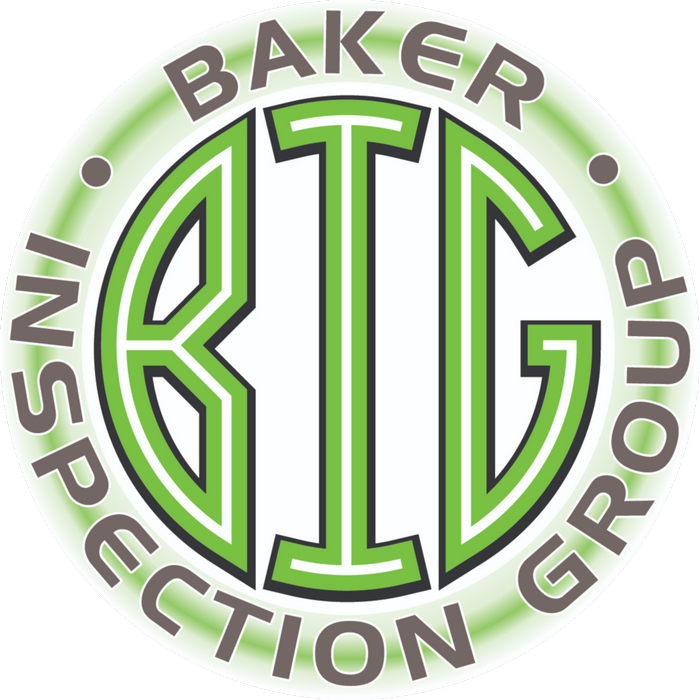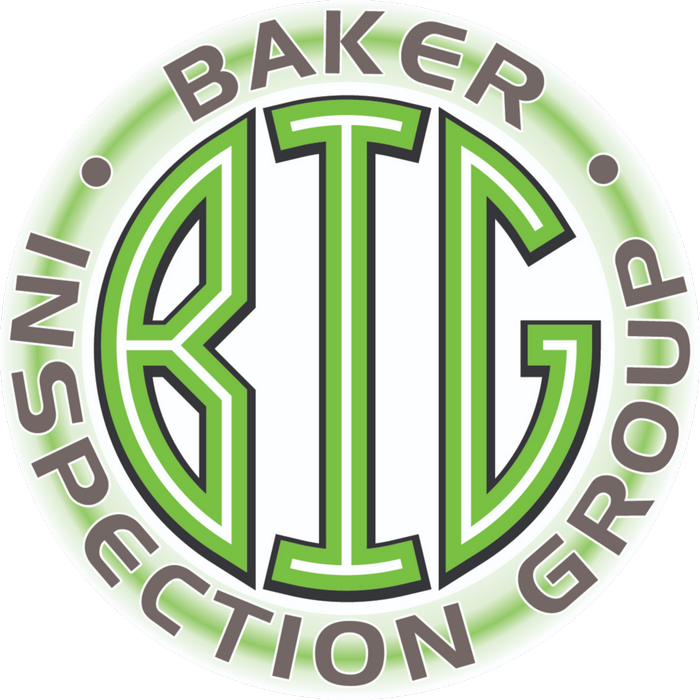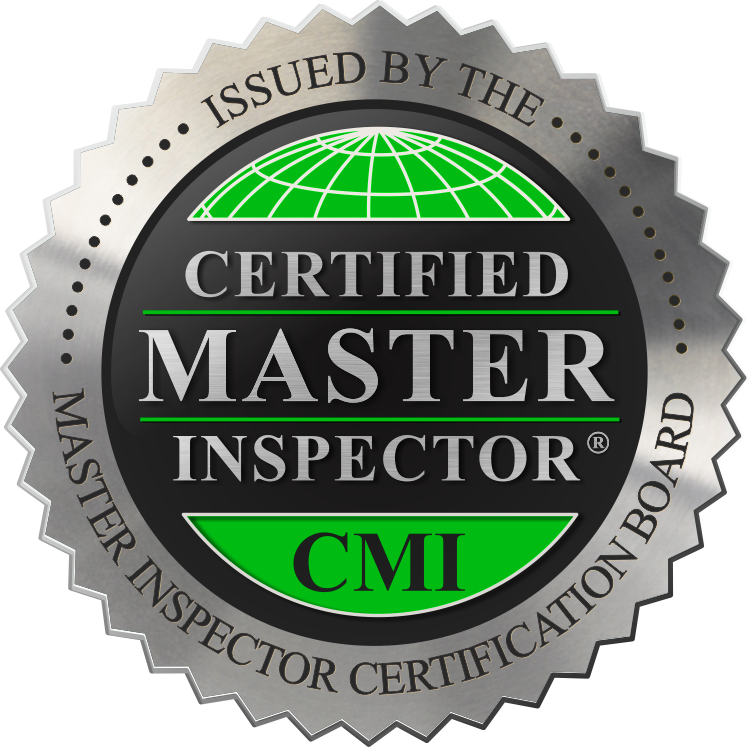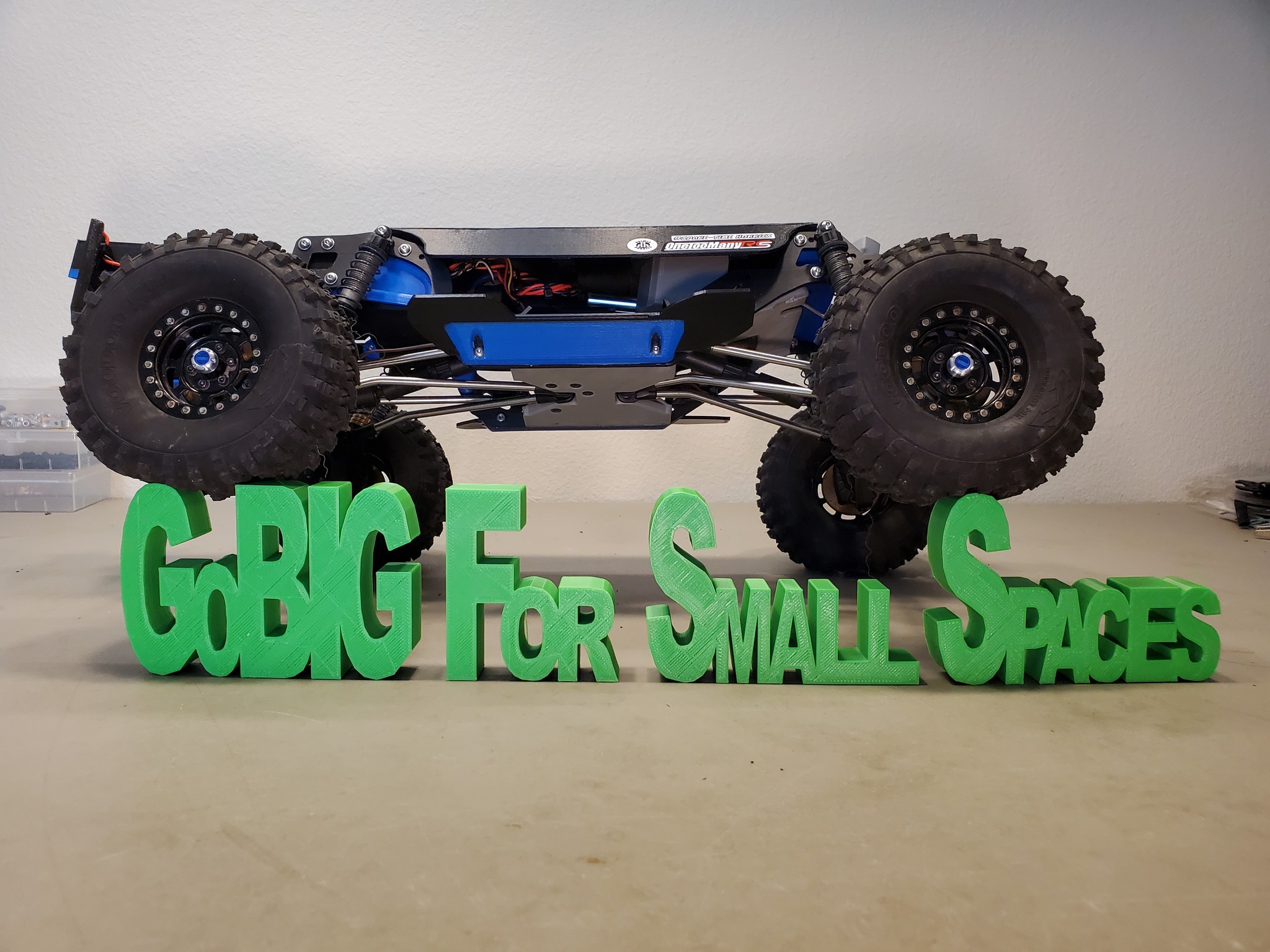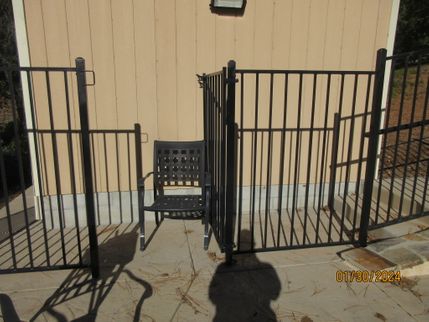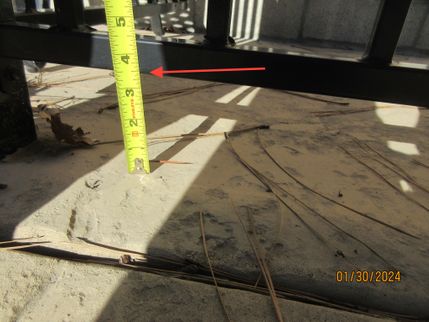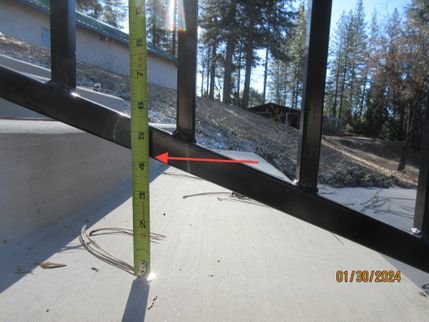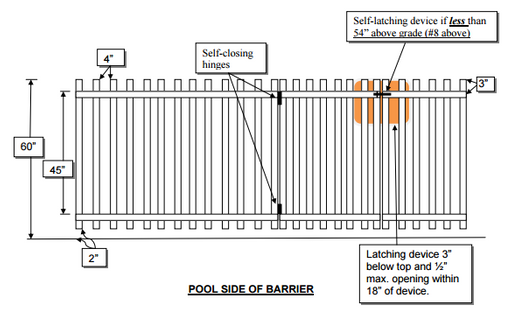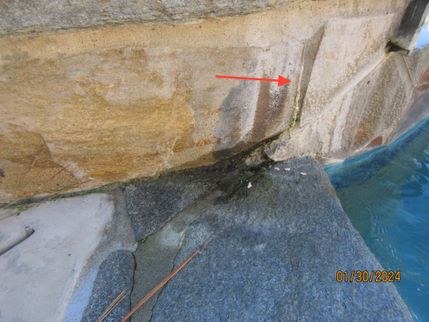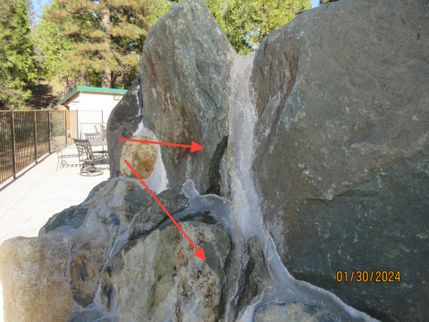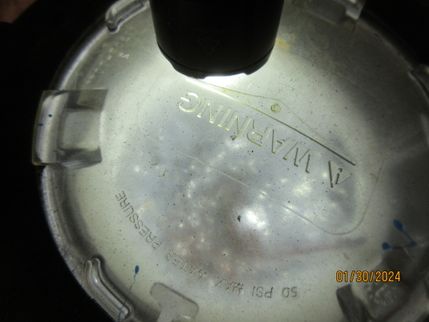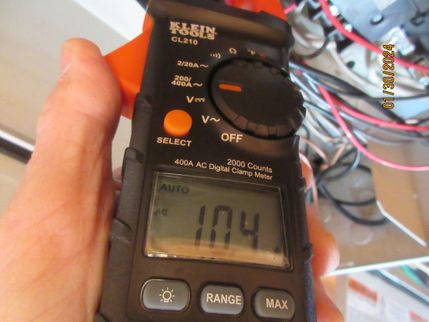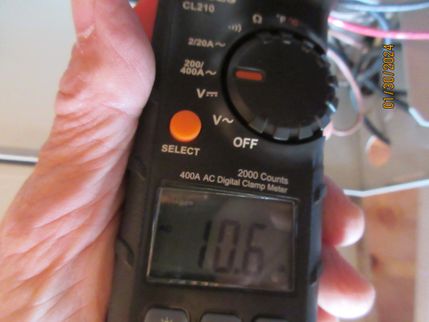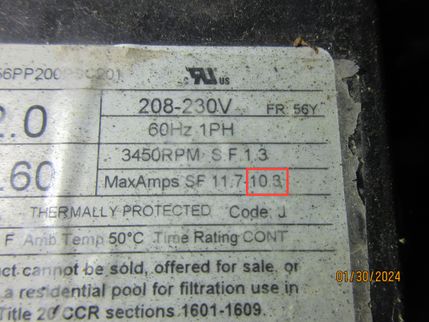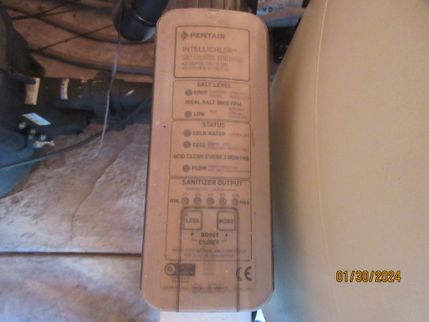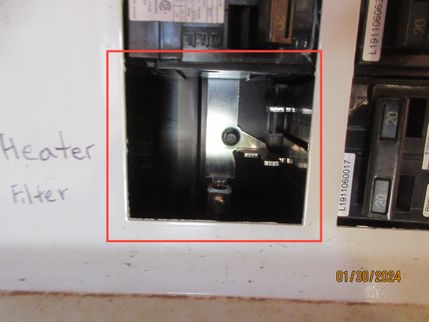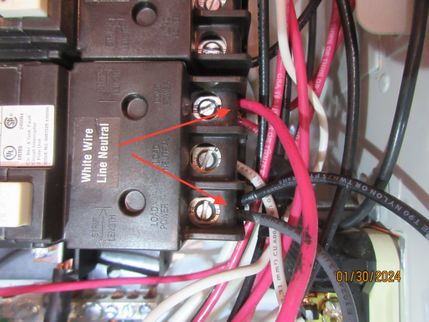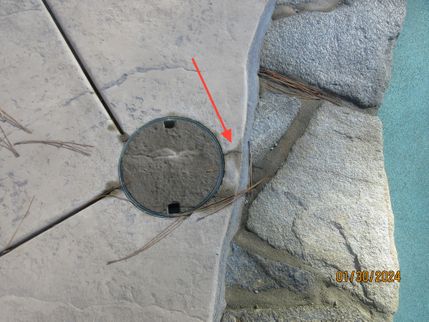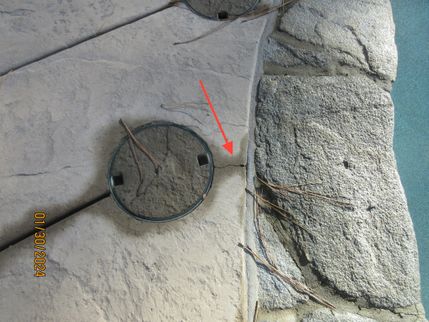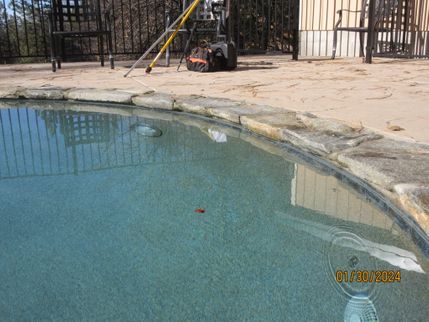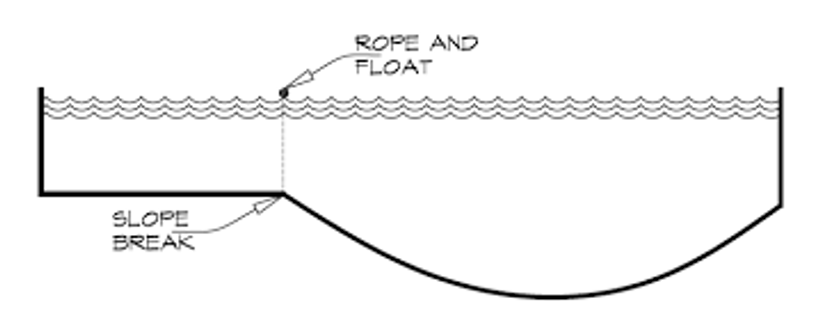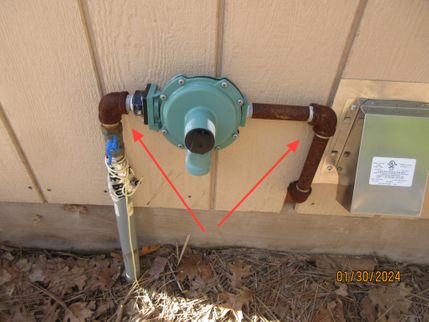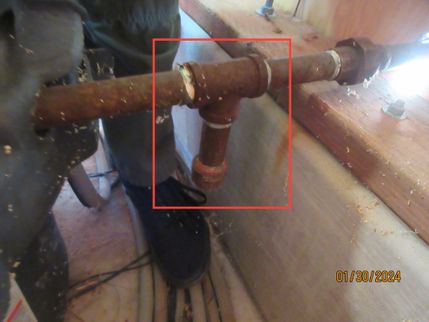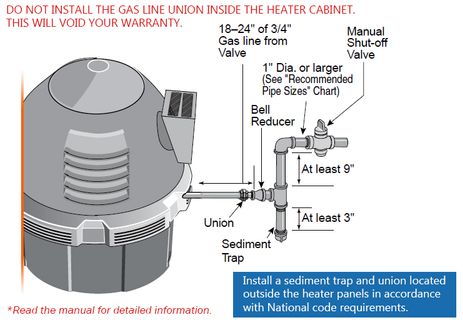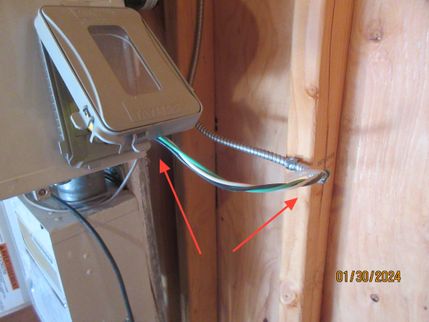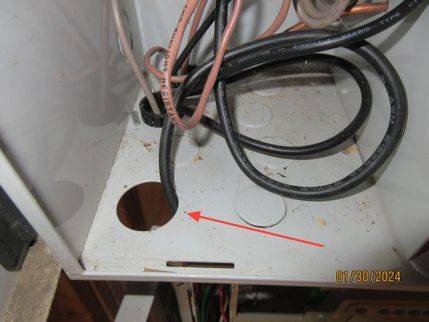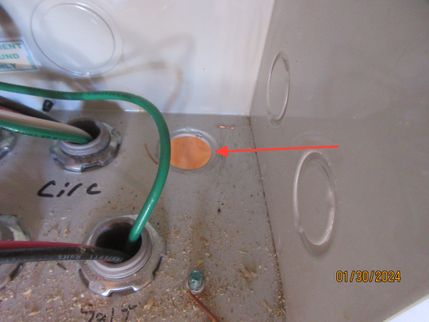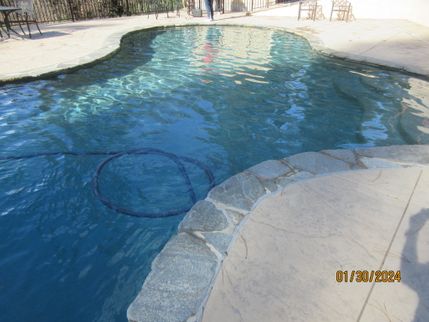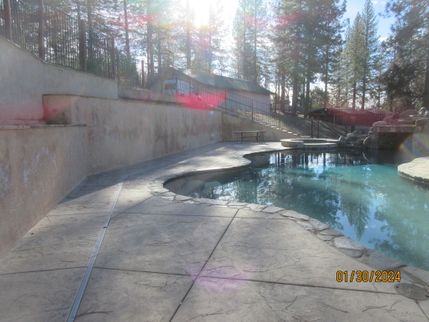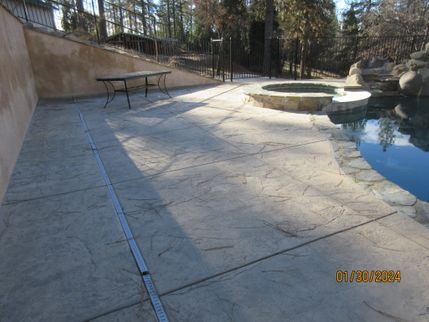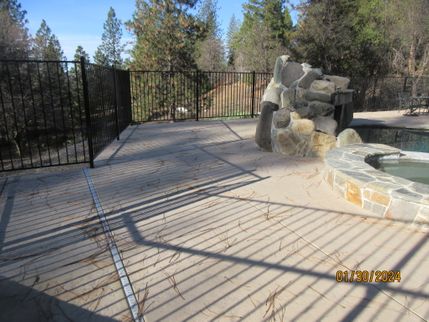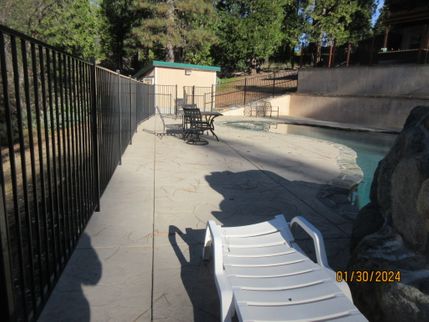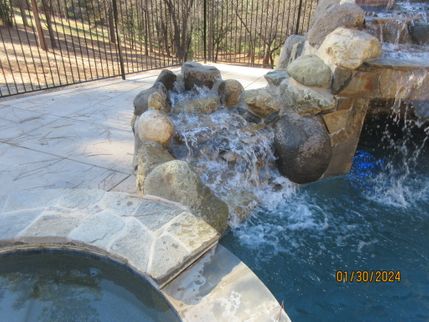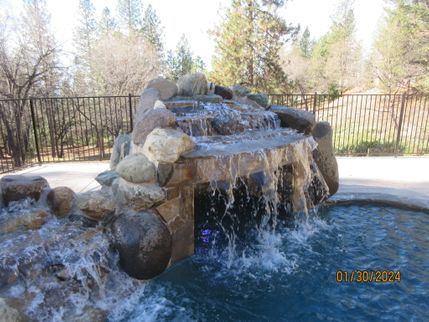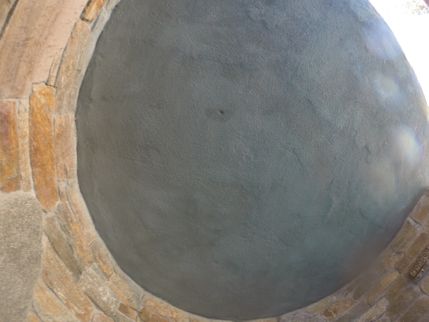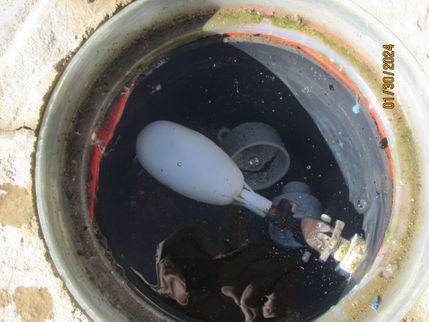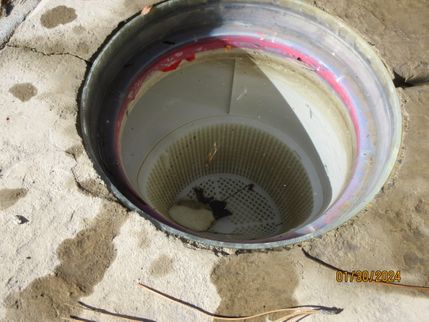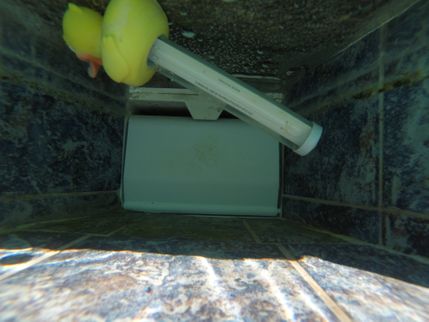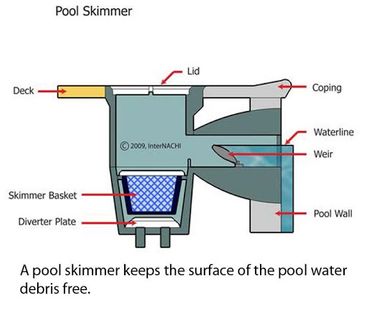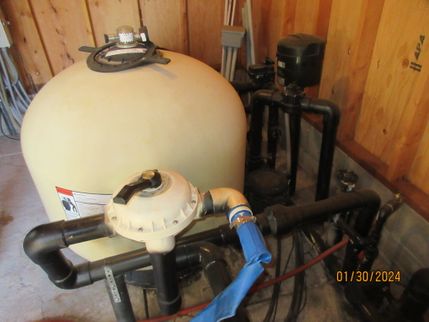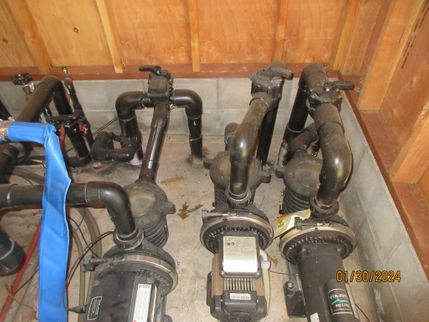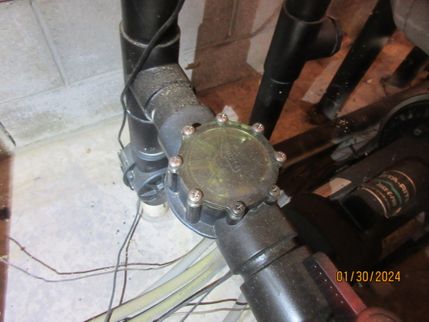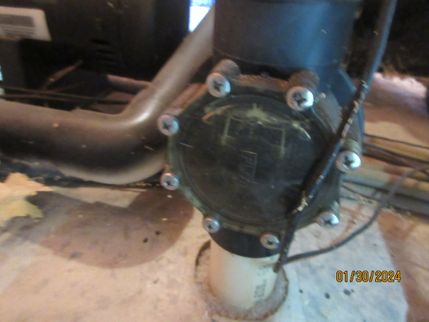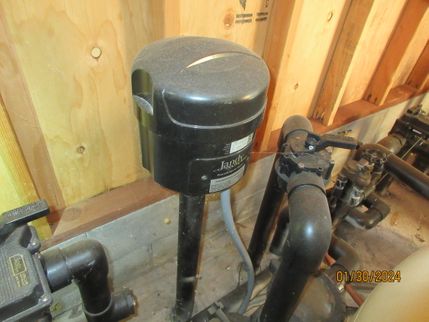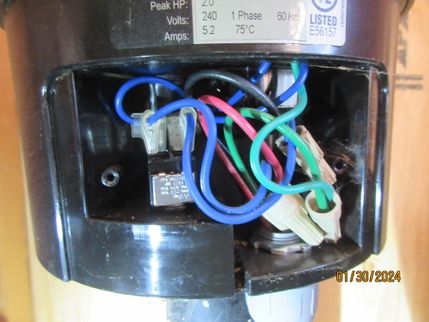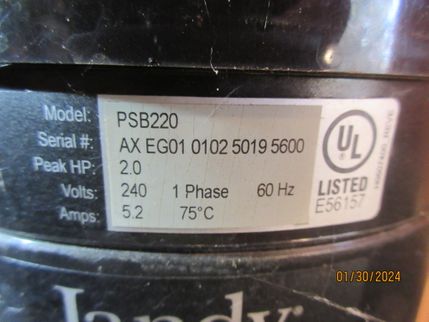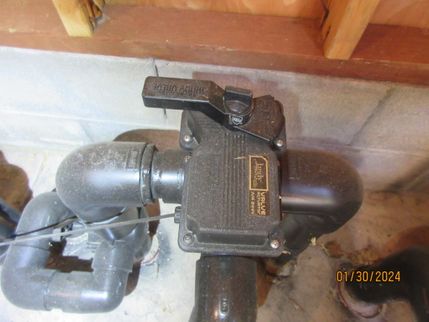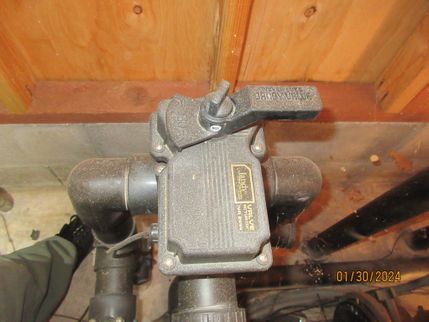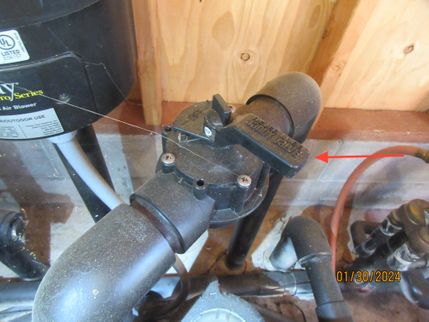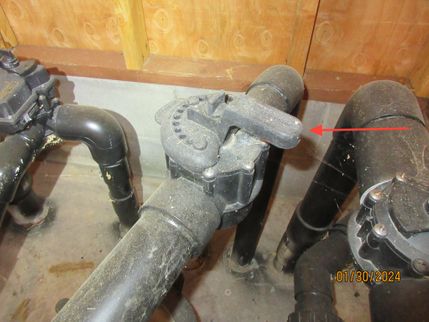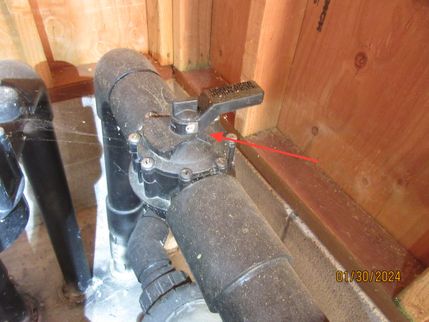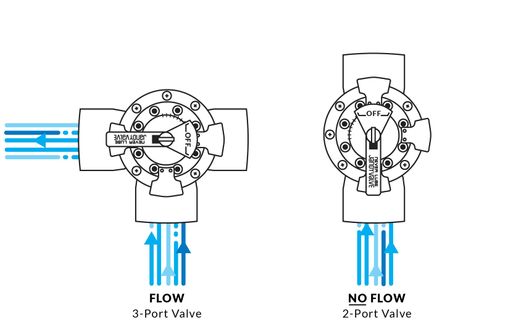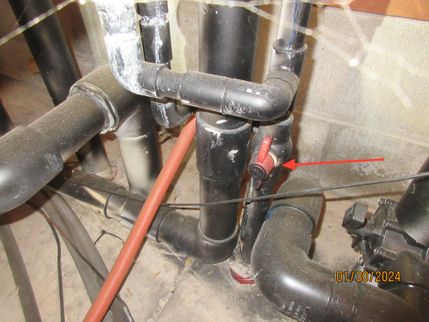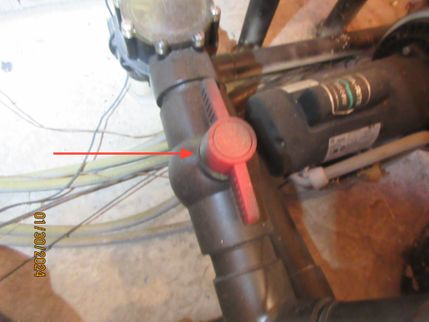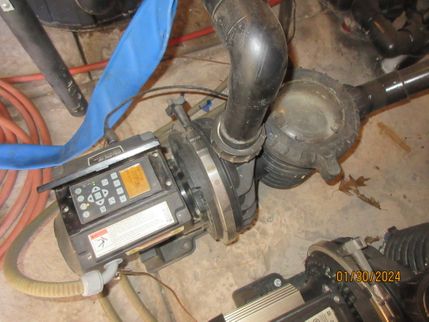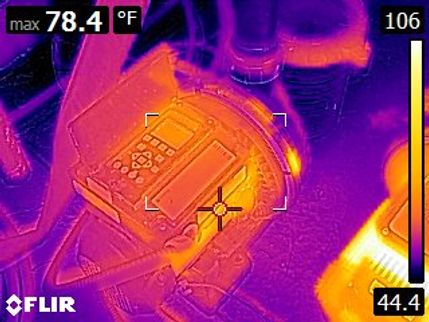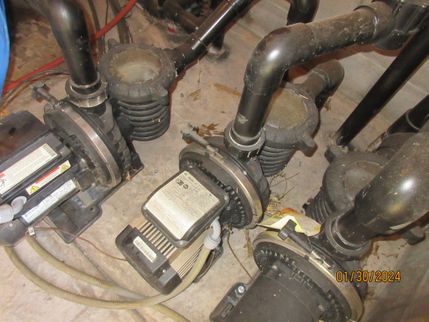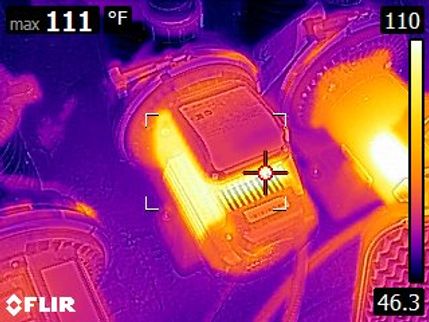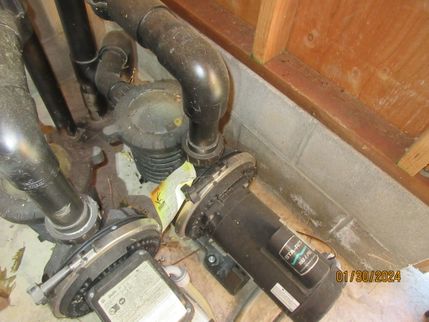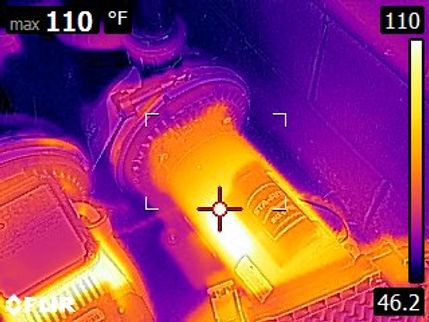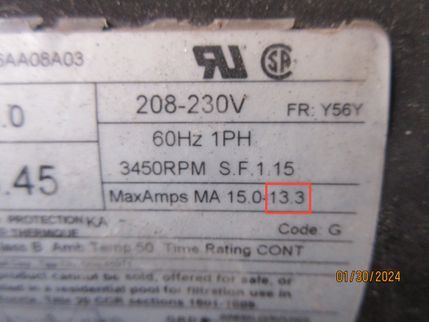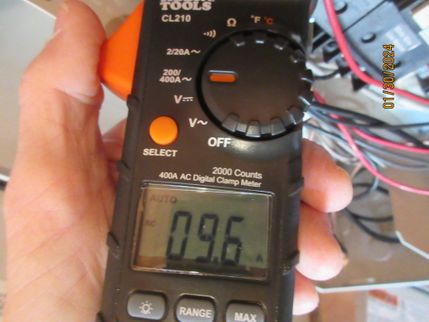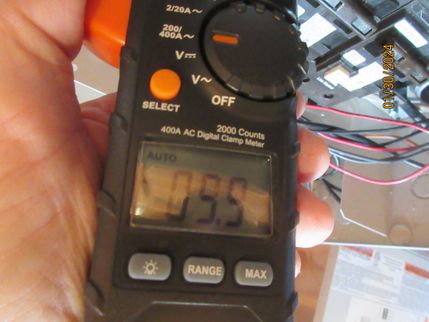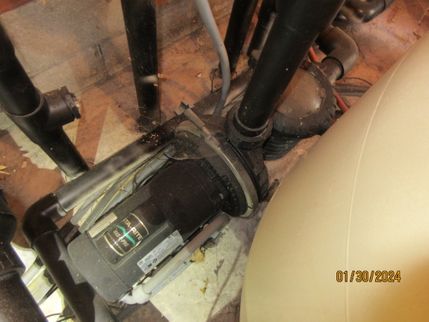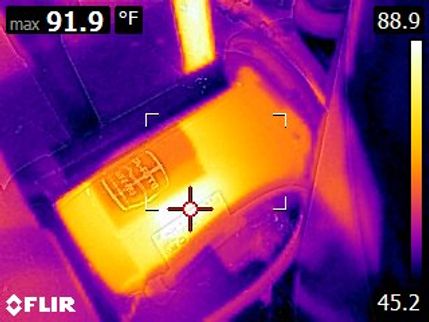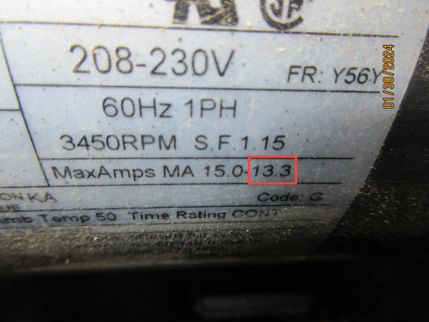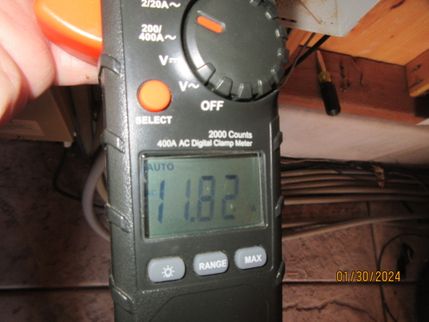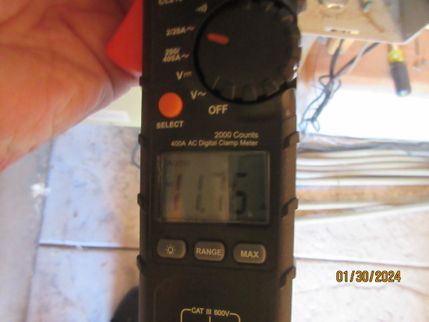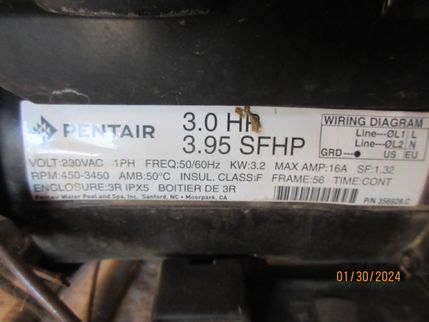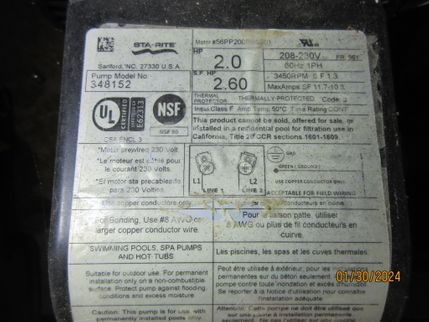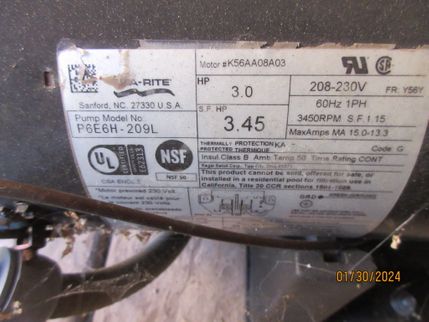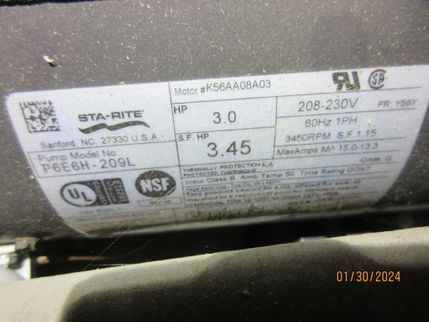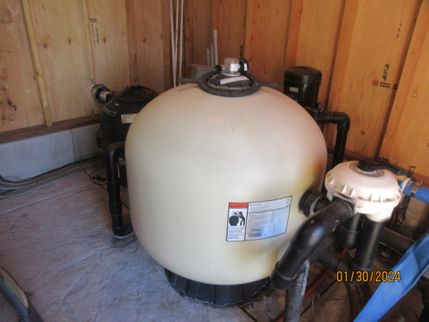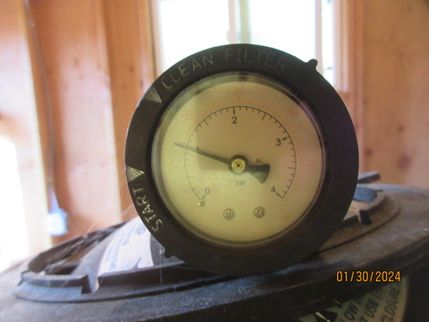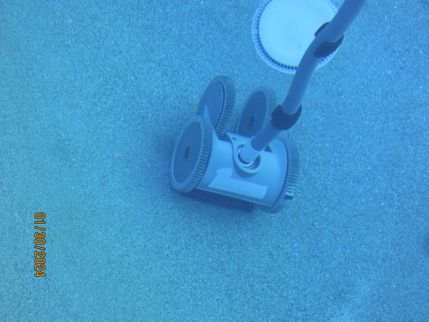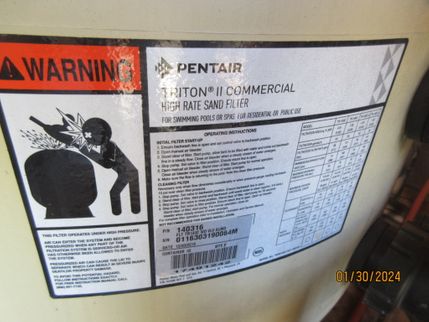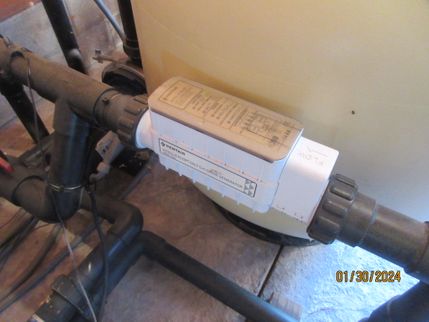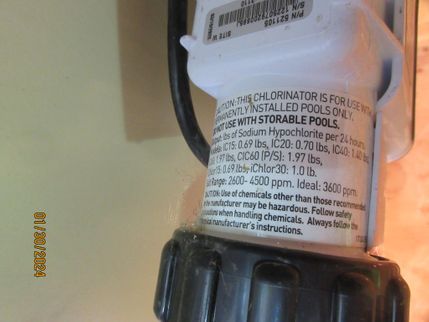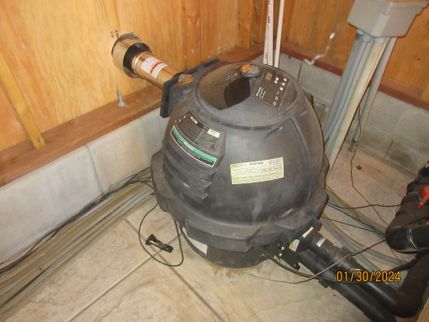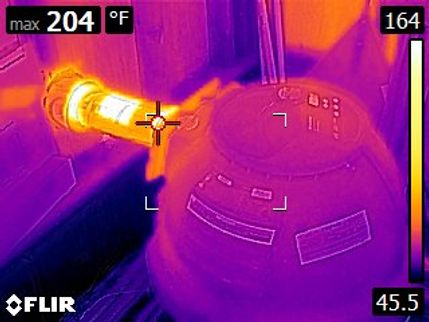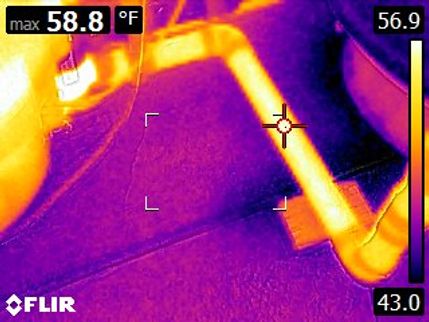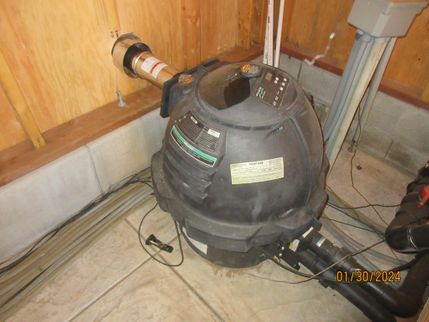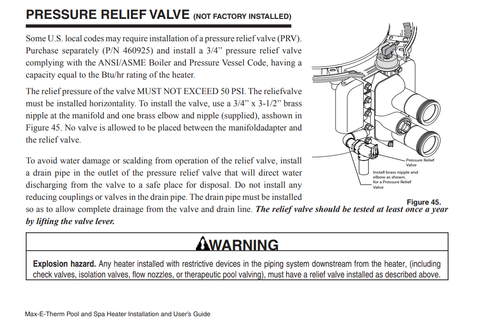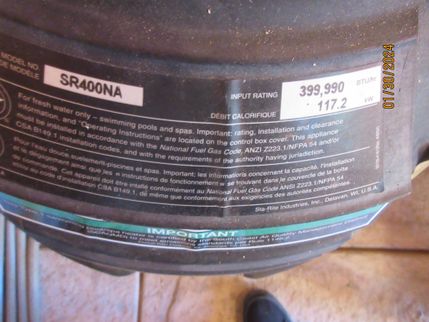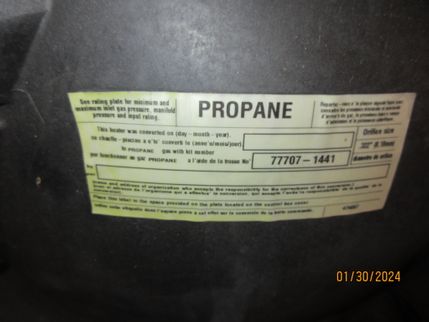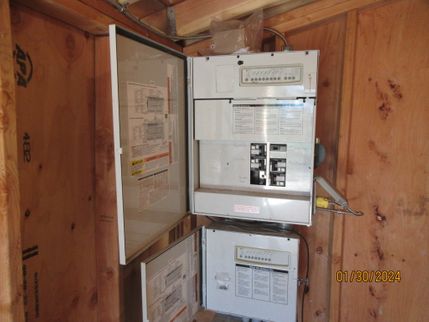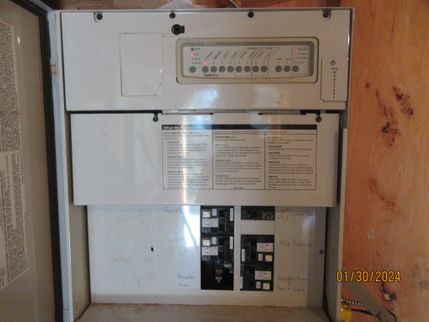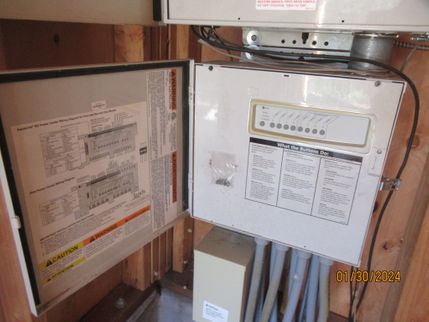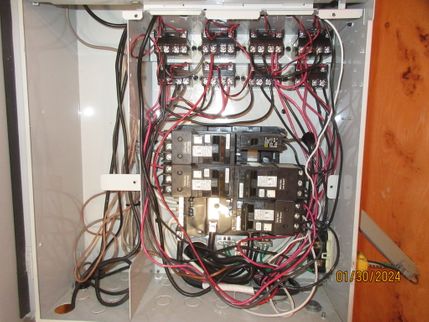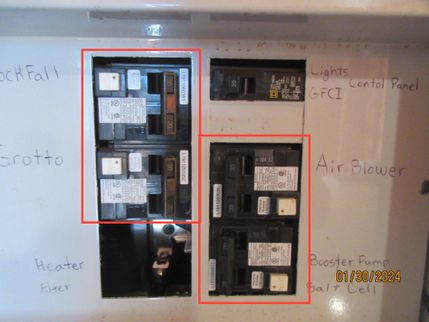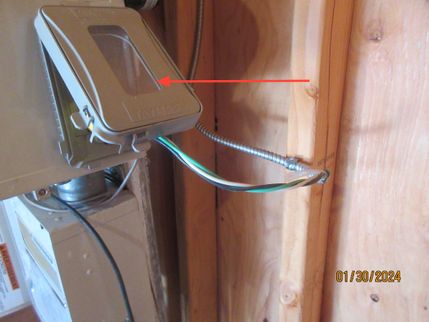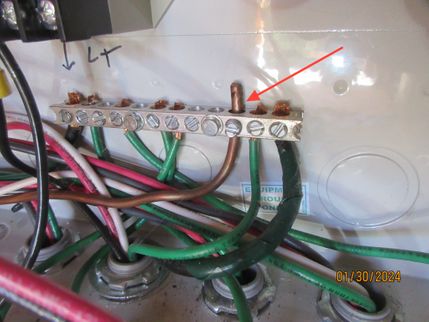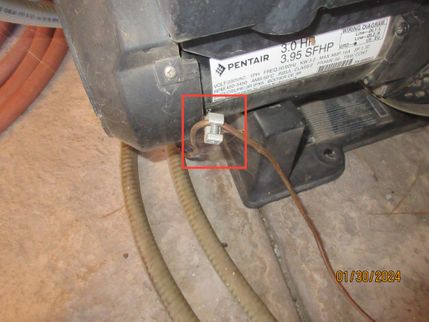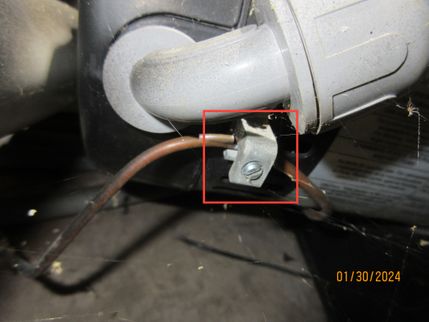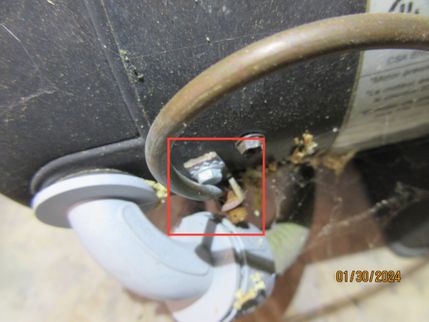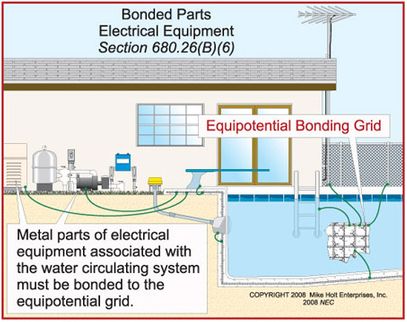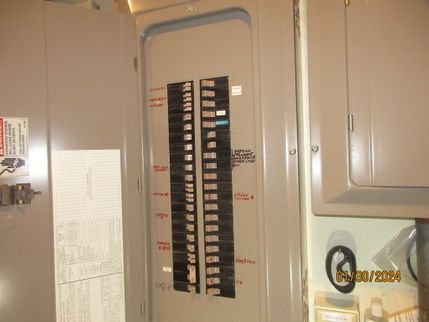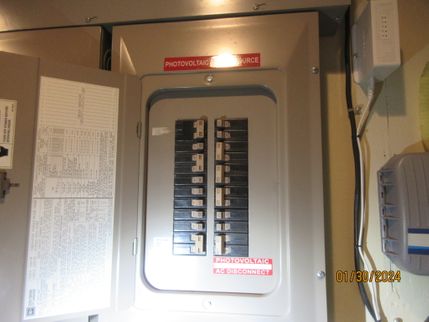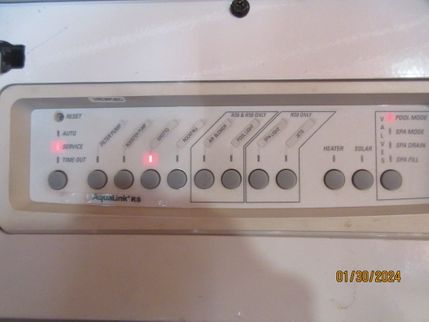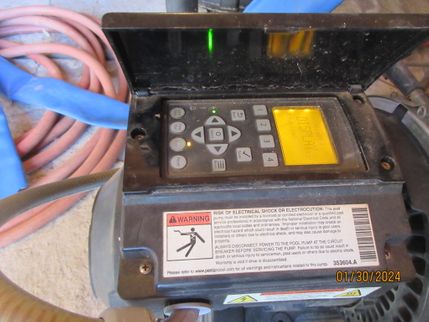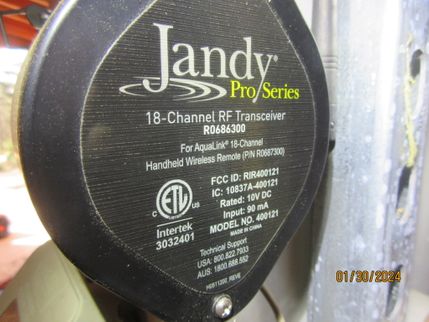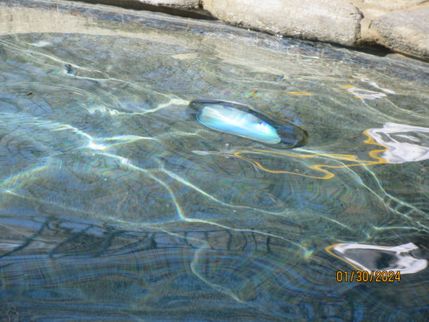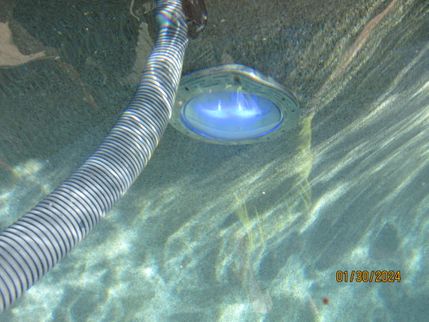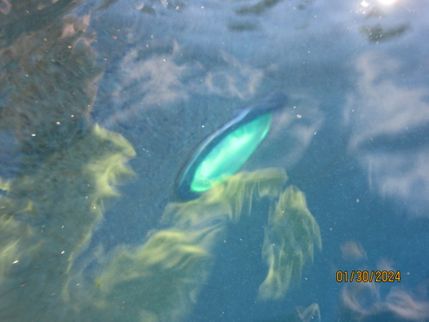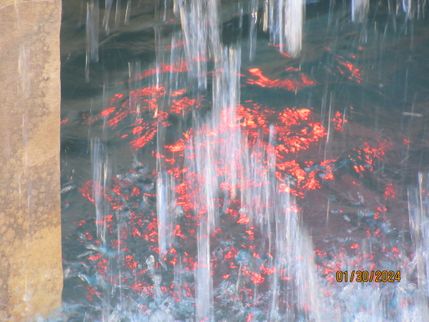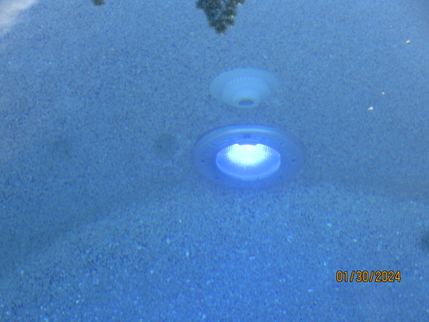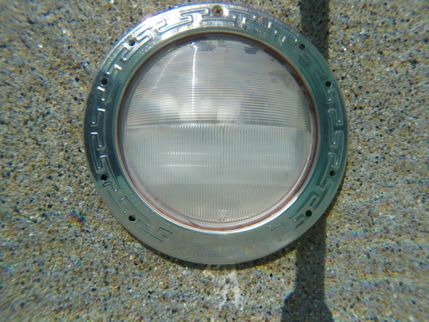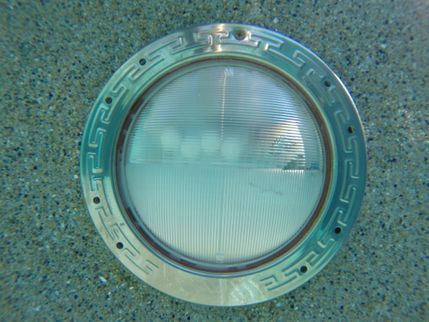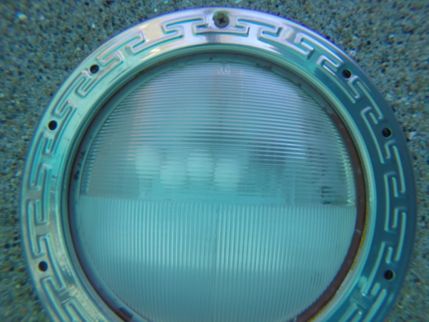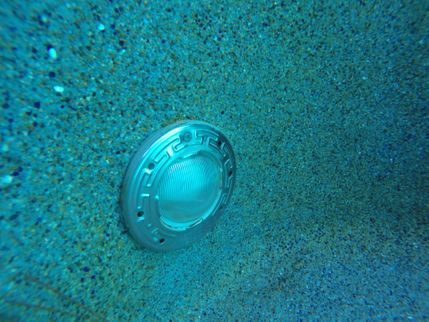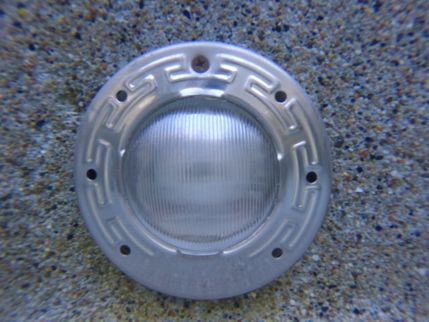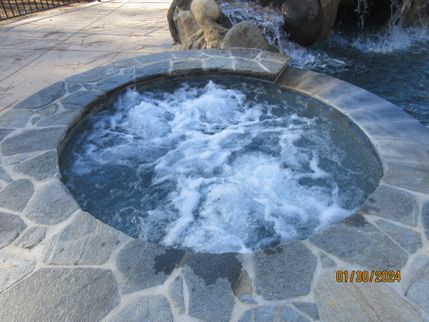Introduction, Scope, Definitions & Compliance Statement
Introduction: The following numbered and attached pages are your property inspection report. The report includes information, pictures, video and recommendations. This inspection was performed in accordance with the current Standards of Practice and Code of Ethics (Spanish Estándares de la Práctica and Código de ética) of InterNACHI (International Association of Certified Home Inspectors) and the Code of Ethics of the CMI (Certified Master Inspectors®). These Standards contain certain and very important limitations, expectations and exclusions to the inspection. A copy is available prior to, during and after the inspection and it is part of the report.
What Really Matters in a Home Inspection: The process can be stressful. You will be asked to absorb a lot of information in a short time. This often includes a digital report, photographs and what the Inspector himself says during the inspection. All this combined with the Seller's disclosure and what you notice yourself makes the experience even more overwhelming. What should you do? Relax. Most of your inspection will be maintenance recommendations, life expectancies and minor imperfections. However, the issues that really matter will fall into four categories: 1. Major defects. 2. Things that may lead to Major defects. 3. Things that may hinder your ability to finance, legally occupy or insure the property. 4. Safety hazards. Anything in these categories should be corrected. Often a serious problem can be corrected inexpensively to protect both life and property (especially in categories 2 and 4). Realize that Sellers are typically under no obligation to repair anything mentioned in the report.
Use of Photos and Video: Your report includes photographs which help to clarify where the Inspector went, what was looked at, and the condition of a system or component at the time of the inspection. Some of the pictures may be of deficiencies or problem areas, these are to help you better understand what is documented in this report and may allow you see areas or items that you normally would not see. Not all areas of deficiencies or conditions will be supported with photos.
Thermal Imaging: An infrared camera may be used for specific areas or visual problems and should not be viewed as a full building thermal scan. Temperature readings on thermal images in this report are included as a courtesy and should not be wholly relied upon as a home inspection is qualitative, not quantitative. These values can vary +/- 4% or more of displayed readings, and these values will display surface temperatures when air temperature readings would actually need to be conducted on some items which is beyond the scope of a property inspection.
Scope: A property inspection is intended to assist in evaluating the overall condition of the dwelling. The inspection is based on observation of the visible, readily accessible, and apparent condition of the structure and its components on this day. The results of this inspection are not intended to make any representation regarding the presence or absence of concealed defects that are not reasonably ascertainable or readily accessible in a competently performed inspection.
No Warranty, Guarantee or Insurance by Baker Inspection Group is expressed or implied. This report does not include inspection for Code Compliance, Wood Destroying Organisms, Asbestos, Mold or Lead. A representative sampling of the building components is viewed in areas that are accessible at the time of the inspection. No destructive testing or dismantling of components is performed. Not all defects will be identified during this inspection. Unexpected repairs should be anticipated. The person conducting your inspection is not a Structural Engineer or other professional whose license authorizes the rendering of an opinion as to the structural integrity of a building or its other component parts.
This report has been produced in accordance with the AGREEMENT and is subject to the terms and conditions agreed upon therein. The report was produced exclusively for our CLIENT. Not to be used or interpreted by anyone other than our CLIENT or REPRESENTATIVE. If you’re reading this report but did not hire us, Baker Inspection Group, to perform the original inspection, please note that it is likely that conditions related to the home have probably changed. Minor problems noted may have become worse, recent events may have created new issues and items may even have been corrected and improved. Please call us at (209) 522-5320 so that we can arrange for a proper inspection. Thank You!
Getting the Information to You
This report is designed to deliver important and technical information in an easy way for anyone to access and understand. You can take a quick look at our "Summary Page” and quickly get critical information for important decision making. However, we strongly recommend that you take the time to read the full Report, which includes digital photographs, captions, diagrams, descriptions, videos and hot links to additional information.
The best way to get the layers of information that are presented in this report is to read your report online (the HTML version), which will allow you to expand your learning about your house. You will notice some words or series of words highlighted in blue and underlined – clicking on these will provide you with a link to additional information. The HTML version of this report also contains short video clips which often contain important information and critical context and sounds that can be difficult to capture in words and still pictures.
For the most reliable viewing experience, I recommend viewing the report on as large a screen as practical, as much detail can be lost on small devices like smart phones. For similar reasons, reports should only be printed in color to retain as much detail as possible.
This report can also be printed on paper or to a PDF document.
Chapters and Sections: This report is divided into chapters that parcel the property into logical inspection components. Each chapter is broken into sections that relate to a specific system or component. You can navigate between chapters with the click of a button on the left side margin.
Most sections will contain some descriptive information done in black font. Observation narratives, done in colored boxes, will be included if a system or component is found to be significantly deficient in some way or if we wish to provide helpful additional information. If a system or component of the home was deemed to be in satisfactory or serviceable condition, there may be no narrative observation comments in that section.
Observation Labels: All narrative observations are colored, numbered and labeled to help you find, refer to, and understand the severity of the observation. Observation colors and labels used in this report are:
- Description:Detailed description of various aspects of the property noted during the inspection.
- Note:Refers to aside information and / or any comments elaborating on descriptions of systems in the home of a more informational nature.
- Major Concern:Repair items that may cost significant money to correct now or in the near future, or items that require immediate attention to prevent additional damage or eliminate safety hazards. Baker Inspection Group always recommends Qualified Contractors to perform all repair work recommended in the inspection report.
- Pool Notes:Refers to aside information and / or any comments elaborating on descriptions of systems of the pool in a more informational nature.
- Pool Due Diligence:Observations that may require further investigation about a systems condition prior to closing and / or if it exceeds our Standards of Practice for a pool inspection.
- Pool Repair:Repair items that require correction now or in the near future, or items that require immediate attention to prevent additional damage or eliminate safety hazards.
- Pool Improvement and Maintenance:
These are repair items that should be considered "routine pool ownership" items.
Report Summary: The Report Summary is designed as an overview of all the observations noted during the inspection. This helpful overview is not a substitution for reading the entire inspection report. The entire report must be read to get a complete understanding of this inspection report.
California Home Inspector Compliance Statement: I represent that I am a full member in good standing of the International Association of Certified Home Inspectors (InterNACHI) Member #10052303.
CLICK HERE for a link to the California Business and Professions Code Section 7195-7199 which pertains to Home Inspectors.
Scot Baker, Certified Master Inspector®, Owner of Baker Inspection Group
Report Summary
Major Concerns
No Major Concerns were noted.Pool Due Diligences
- PS-32 Pools and Spas:
This gas pool heater did not have a visible external temperature/pressure relief (TPR) valve installed. This condition is potentially dangerous and if tank pressure should exceed the tank design limits catastrophic explosion may result. Some units may have an internal pressure and/or temperature sensing/relief switch(es). Recommend further evaluation and repairs as needed.
- PS-42 Pools and Spas:
Due to lack of labeling, the pool breaker was not located and the disconnect amperage is unknown. Recommend further evaluation to determine the main disconnect for the pool electrical system.
Pool Repair Items
- PS-2 Pools and Spas:
Beginning January 1st 2018, in accordance with SB 442, Newman. Public health: pools: drownings, Home Inspectors must report on the presence of seven pool safety features. Below is the wording of the new bill. In connection with the transfer, as defined in subdivision (e), of real property with a swimming pool or spa, an appropriate inspection shall include a noninvasive physical examination of the pool or spa and dwelling for the purpose of identifying which, if any, of the seven drowning prevention safety features listed in subdivision (a) of Section 115922 of the Health and Safety Code the pool or spa is equipped. SEC. 4. Section 115922 of the Health and Safety Code is amended to read: 115922. (a) Except as provided in Section 115925, when a building permit is issued for the construction of a new swimming pool or spa or the remodeling of an existing swimming pool or spa at a private single-family home, the respective swimming pool or spa shall be equipped with at least two of the following seven drowning prevention safety features: (1) An enclosure that meets the requirements of Section 115923 and isolates the swimming pool or spa from the private single-family home. (2) Removable mesh fencing that meets American Society for Testing and Materials (ASTM) Specifications F2286 standards in conjunction with a gate that is self-closing and self-latching and can accommodate a key lockable device. (3) An approved safety pool cover, as defined in subdivision (d) of Section 115921. (4) Exit alarms on the private single-family home’s doors that provide direct access to the swimming pool or spa. The exit alarm may cause either an alarm noise or a verbal warning, such as a repeating notification that “the door to the pool is open.” (5) A self-closing, self-latching device with a release mechanism placed no lower than 54-inches above the floor on the private single-family home’s doors providing direct access to the swimming pool or spa. (6) An alarm that, when placed in a swimming pool or spa, will sound upon detection of accidental or unauthorized entrance into the water. The alarm shall meet and be independently certified to the ASTM Standard F2208 “Standard Safety Specification for Residential Pool Alarms,” which includes surface motion, pressure, sonar, laser, and infrared type alarms. A swimming protection alarm feature designed for individual use, including an alarm attached to a child that sounds when the child exceeds a certain distance or becomes submerged in water, is not a qualifying drowning prevention safety feature. (7) Other means of protection, if the degree of protection afforded is equal to or greater than that afforded by any of the features set forth above and has been independently verified by an approved testing laboratory as meeting standards for those features established by the ASTM or the American Society of Mechanical Engineers (ASME). Section 115923. An enclosure shall have all of the following characteristics: (a) Any access gates through the enclosure open away from the swimming pool, and are self-closing with a self-latching device placed no lower than 60-inches above the ground. (b) A minimum height of 60-inches. (c) A maximum vertical clearance from the ground to the bottom of the enclosure of two-inches. (d) Gaps or voids, if any, do not allow passage of a sphere equal to or greater than four-inches in diameter. (e) An outside surface free of protrusions, cavities, or other physical characteristics that would serve as handholds or footholds that could enable a child below the age of five years to climb over.
- PS-13 Pools and Spas:
Air bubbles were visible at one or more pool jets indicated that the system may be cavitating. This condition can result from a pipe or pipe connection leak, a restriction of some type, or a poorly-sized pump. Recommend further evaluation and repairs as needed.
- PS-23 Pools and Spas:
Noise and vibration from the pool system pump indicated that it may be cavitating. This condition can result from a leak, a restriction of some type, or a poorly-sized pump. Recommend further evaluation and repairs as needed.
- PS-24 Pools and Spas:
The rock waterfall pump had an amperage draw (10.4 and 10.6) that exceeded the maximum amperage draw (10.3) stated on the data plate. This indicates that the pump is showing wear and may need replacement in the future. Recommend further evaluation and repairs as needed.
- PS-30 Pools and Spas:
The pool system sanitizer device appeared to be inoperable at the time of the inspection. Recommend further evaluation and repairs as needed.
- PS-33 Pools and Spas:
The flow sensor for the pool heater appeared to be inoperable at the time of the inspection. When the pool pump has stopped running the pool heater should automatically shut itself down. Recommend further evaluation and repairs as needed.
- PS-43 Pools and Spas:
Openings were noted in the pool electrical panel dead front cover. This is unsafe as it does not adequately protect the energized area of the electric panel. Cover all open knock-outs with listed covers.
- PS-44 Pools and Spas:
In the pool electrical panel, two wires were connected to circuit breakers that were designed for only one wire. This is known as a "double-tap", is a defective condition and should be corrected. Repair as needed.
Pool Improvement and Maintenance Items
- PS-5 Pools and Spas:
The pool had cracked decking at the skimmer opening and auto fill. Recommend repairs as needed.
- PS-6 Pools and Spas:
The pool appeared to be filled to be overfilled at the time of the inspection. For a pool skimmer and filter pump system to work effectively, the water level must be at about the half-way point on the skimmer. This allows for the most efficient flow of water through the filter system. If the water level is overflowing the skimmer, you will have to remove some of the excess water in order to restore the filter system to proper function.
- PS-7 Pools and Spas:
The Inspector recommends that you have water in the pool tested to ensure that it lies within acceptable parameters.
- PS-9 Pools and Spas:
The swimming pool was missing the rope and float assembly installed at the floor slope change. These are installed to provide a visual indicator of where the pool transitions from the shallow to the deep end. Recommend the installation of a proper rope and float assembly as needed. 811.1 Rope and Float In pools where the point of first slope break occurs, a rope and float assembly shall be installed across the width of the pool.
- PS-34 Pools and Spas:
Gas pipes at the pool heater exhibited corrosion. If this condition continues it may eventually cause gas pipes to leak. The source of moisture causing this corrosion should be located and the condition corrected. Recommend further evaluation and repairs as needed.
- PS-35 Pools and Spas:
An improper sediment trap or drip leg was installed at the pool water heater. Sediment traps and drip legs are installed to keep particulates and moisture out of the gas valve. Particulates or moisture in the gas valve can interfere with water heater burner operation. Recommend further evaluation as needed concerning the advisability of installing a drip leg in the gas line.
- PS-45 Pools and Spas:
The wiring was not properly protected by a sheathing or conduit at the pool electrical panel. This is a potential safety hazard. Repair as needed.
- PS-46 Pools and Spas:
Grommets or bushings were missing and are needed to protect the non-metallic sheathed cable where the wiring enters the pool electrical panel and provide strain relief. Recommend repairs as needed.
- PS-47 Pools and Spas:
Unfilled holes or knockouts in the pool panel may allow insect or rodent entry, or allow persons to come into contact with energized electrical components. This condition is a potential hazard and should be corrected.
The Full Inspection Report
Pools and Spas
General Pool Photos
Safety Barrier System
Decking, Coping, Features and Area
Water Level
Water Quality
Surface, Tiling and Components
Plumbing at Pool (Jets, Skimmer, Drains, etc.)
Plumbing System
Pump System
Filtration and Cleaning Systems
Automatic Sanitation and Chemical Storage
Heating System
Electrical Panel, Wiring, GFCI and Bonding
Control System
Pool Lighting
Spa
General Comments
Building Conditions and Limitations
Standards of Practice: InterNACHI (International Association of Home Inspectors)
Inspection Type: Limited Inspection Only, Pool Inspection Only
Attending the Inspection: Client and REALTOR®
Pool Inspection: Yes
Temperature at Start of Inspection: 55-60 (F)
Temperature at End of Inspection: 60-65 (F)
Weather During the Inspection: Clear
Ground/Soil Surface Condition: Dry
Significant Precipitation in Prior Three Days: No
This is a limited inspection of only those inspection items specifically reported on in this report.
Baker Inspection Group did not inspect any other items.
Pools are fun, but children and adults can lose their life quickly. Over 4000 lives annually are lost with one-third under the age of 14. A child can drown in the time it takes to answer a phone. A swimming pool is 14 times more likely than a motor vehicle to be involved in the death of a child age 4 and under. An estimated 5,000 children ages 14 and under are hospitalized due to near-drownings each year; 15% die in the hospital and as many as 20% suffer severe, permanent brain damage. Of all preschoolers who drown, 70% are in the care of one or both parents at the time of the drowning and 75% are missing from sight for five minutes or less. Drowning surpasses all other causes of death to children age 14 and under in Arizona, California, Florida, Hawaii, Montana, Nevada, Oregon, Utah and Washington. A pool alarm with a loud speaker system to sound outside as well as inside the home could save a life. Even if you do not have children you should be concerned. 35% of children that drowned did so in someone else's pool. For more info, please do an Internet search on pool safety.
Pools and Spas
General Pool Photos
Safety Barrier System
At Least Two of the Following Required: Fail
Pool Enclosure: Yes, Not Safety Compliant
Safety Pool Cover: No
Pool Surface Alarm: No
Exterior Door Exit Alarms: N/A
Exterior Door Self Closing and Latching: N/A
Window Alarms: N/A
Other Means of Protection: No
Beginning January 1st 2018, in accordance with SB 442, Newman. Public health: pools: drownings, Home Inspectors must report on the presence of seven pool safety features. Below is the wording of the new bill. In connection with the transfer, as defined in subdivision (e), of real property with a swimming pool or spa, an appropriate inspection shall include a noninvasive physical examination of the pool or spa and dwelling for the purpose of identifying which, if any, of the seven drowning prevention safety features listed in subdivision (a) of Section 115922 of the Health and Safety Code the pool or spa is equipped. SEC. 4. Section 115922 of the Health and Safety Code is amended to read: 115922. (a) Except as provided in Section 115925, when a building permit is issued for the construction of a new swimming pool or spa or the remodeling of an existing swimming pool or spa at a private single-family home, the respective swimming pool or spa shall be equipped with at least two of the following seven drowning prevention safety features: (1) An enclosure that meets the requirements of Section 115923 and isolates the swimming pool or spa from the private single-family home. (2) Removable mesh fencing that meets American Society for Testing and Materials (ASTM) Specifications F2286 standards in conjunction with a gate that is self-closing and self-latching and can accommodate a key lockable device. (3) An approved safety pool cover, as defined in subdivision (d) of Section 115921. (4) Exit alarms on the private single-family home’s doors that provide direct access to the swimming pool or spa. The exit alarm may cause either an alarm noise or a verbal warning, such as a repeating notification that “the door to the pool is open.” (5) A self-closing, self-latching device with a release mechanism placed no lower than 54-inches above the floor on the private single-family home’s doors providing direct access to the swimming pool or spa. (6) An alarm that, when placed in a swimming pool or spa, will sound upon detection of accidental or unauthorized entrance into the water. The alarm shall meet and be independently certified to the ASTM Standard F2208 “Standard Safety Specification for Residential Pool Alarms,” which includes surface motion, pressure, sonar, laser, and infrared type alarms. A swimming protection alarm feature designed for individual use, including an alarm attached to a child that sounds when the child exceeds a certain distance or becomes submerged in water, is not a qualifying drowning prevention safety feature. (7) Other means of protection, if the degree of protection afforded is equal to or greater than that afforded by any of the features set forth above and has been independently verified by an approved testing laboratory as meeting standards for those features established by the ASTM or the American Society of Mechanical Engineers (ASME). Section 115923. An enclosure shall have all of the following characteristics: (a) Any access gates through the enclosure open away from the swimming pool, and are self-closing with a self-latching device placed no lower than 60-inches above the ground. (b) A minimum height of 60-inches. (c) A maximum vertical clearance from the ground to the bottom of the enclosure of two-inches. (d) Gaps or voids, if any, do not allow passage of a sphere equal to or greater than four-inches in diameter. (e) An outside surface free of protrusions, cavities, or other physical characteristics that would serve as handholds or footholds that could enable a child below the age of five years to climb over.
Decking, Coping, Features and Area
Deck Material: Concrete
Water Level
Water Level: Over Capacity
The pool appeared to be filled to be overfilled at the time of the inspection. For a pool skimmer and filter pump system to work effectively, the water level must be at about the half-way point on the skimmer. This allows for the most efficient flow of water through the filter system. If the water level is overflowing the skimmer, you will have to remove some of the excess water in order to restore the filter system to proper function.
Water Quality
The Inspector recommends that you have water in the pool tested to ensure that it lies within acceptable parameters.
Surface, Tiling and Components
Vessel Type: Aggregate Finish
The pool surface had an aggregate finish. Aggregate pool finishes incorporate stones, pebbles, and/or glass beads into the pool plaster to add resilience and aesthetic qualities. Because of this, aggregate finishes are more resistant to pool chemical imbalances than other finishes and last much longer.
The swimming pool was missing the rope and float assembly installed at the floor slope change. These are installed to provide a visual indicator of where the pool transitions from the shallow to the deep end. Recommend the installation of a proper rope and float assembly as needed. 811.1 Rope and Float In pools where the point of first slope break occurs, a rope and float assembly shall be installed across the width of the pool.
Plumbing at Pool (Jets, Skimmer, Drains, etc.)
The auto fill was operational at the time of the inspection.
Air bubbles were visible at one or more pool jets indicated that the system may be cavitating. This condition can result from a pipe or pipe connection leak, a restriction of some type, or a poorly-sized pump. Recommend further evaluation and repairs as needed.
Plumbing System
The spa air blower was functional at the time of the inspection.
The electronic pool control valves were functional at the time of the inspection.
Pump System
Pool Pumps: Pool Pump, Features Pump, Spa Pump, 4 Pumps
Manufacturer: Pentair, Sta-Rite
At the time of the inspection, the Inspector observed the condition and operation of the swimming pool pump.
At the time of the inspection, the Inspector observed the condition and operation of the rock water fall pump.
At the time of the inspection, the Inspector observed the condition and operation of the grotto pool pump.
Noise and vibration from the pool system pump indicated that it may be cavitating. This condition can result from a leak, a restriction of some type, or a poorly-sized pump. Recommend further evaluation and repairs as needed.
This shows the data plates for the pool pumps.
Filtration and Cleaning Systems
Filter Type: Sand Filter, Sweep Present
Manufacturer: Pentair
The pool sweep was functional at the time of the inspection.
Automatic Sanitation and Chemical Storage
Type: Salt Chlorine Generator type
The pool system sanitizer was a salt chlorine generator type. CLICK HERE FOR MORE INFORMATION.
Heating System
Heating System: Propane Powered
Thermal Images Testing Procedure Notes: Thermal Images - Pool Heater
Manufacturer: Sta-Rite
Thermal images show the pool heater was tested and working during inspection. CLICK HERE FOR THE MANUAL
This gas pool heater did not have a visible external temperature/pressure relief (TPR) valve installed. This condition is potentially dangerous and if tank pressure should exceed the tank design limits catastrophic explosion may result. Some units may have an internal pressure and/or temperature sensing/relief switch(es). Recommend further evaluation and repairs as needed.
The flow sensor for the pool heater appeared to be inoperable at the time of the inspection. When the pool pump has stopped running the pool heater should automatically shut itself down. Recommend further evaluation and repairs as needed.
Gas pipes at the pool heater exhibited corrosion. If this condition continues it may eventually cause gas pipes to leak. The source of moisture causing this corrosion should be located and the condition corrected. Recommend further evaluation and repairs as needed.
An improper sediment trap or drip leg was installed at the pool water heater. Sediment traps and drip legs are installed to keep particulates and moisture out of the gas valve. Particulates or moisture in the gas valve can interfere with water heater burner operation. Recommend further evaluation as needed concerning the advisability of installing a drip leg in the gas line.
Electrical Panel, Wiring, GFCI and Bonding
Pool Electrical Panel Disconnect Type: Breaker
Pool Electrical Panel Disconnect Ampacity: Unable to Determine, Requires Verification
Pool Electrical System (GFCI) Protection: - (Yes, GFCI Receptacle at Sub-Panel)
Pool Electrical Panel: Noted
Pool Electrical Panel Type: Main Lug (no main disconnect)
Pool Electrical Panel Ampacity: 125 Amps
Pool Electrical Wiring: Noted
Pool Electrical Panel Manufacturer: Aqualink, Pool Panel
Pool Overcurrent Protection Device: Breakers
The pool electrical panels were located at the pool.
The lower panel was no longer in use.
Pool electrical panel wiring.
Due to lack of labeling, the pool breaker was not located and the disconnect amperage is unknown. Recommend further evaluation to determine the main disconnect for the pool electrical system.
Control System
Type: Digital Controller, Pool Pump Controller, Remote Controller
Pool Lighting
Pool Light: Functional
The pool lighting system had ground fault circuit Interrupter (GFCI) protection.
Spa
This property has a spa. The spa was working at the time of the inspection. Recommend inquiring with the seller for any additional information about this spa.
Safe Home Book
Safe Home Book
Baker Inspection Group is proud to include our SAFE HOME BOOK as part of your home inspection report. This publication is a compilation of well-researched articles especially for homeowners. They include valuable information and tips for helping keep families safe and their homes in top condition. Please enjoy it with our compliments.
©2013 International Association of Certified Home Inspectors & Master Inspector Certification Board.
THE SAFE HOME BOOK contains chapters on the following:
CHILD SAFETY Twelve safety devices to protect your children, crib safety, furniture and TV tip-over hazards, anti-tip brackets, window falls, safety glass, child-proofing windows and stairs, Garage doors and openers, trampoline safety, tree swings, treehouses.
LADDERS AND STAIRWAYS Ladder safety, Attic pull-down ladders, stairways, deck safety.
SWIMMING POOL SAFETY Home pools, swimming pool barriers, pool alarms, pool drain hazards, pool water pathogens, saunas.
HOME SECURITY Burglar-resistant homes, bump keys, the 10 best places to hide valuables in your home, window bars, Safe Rooms (panic rooms).
FIRE SAFETY Dryer vent safety, pilot lights, hearths and hearth extensions, holiday safety, firestops, clothes closet lighting, barbecue safety, kerosene heaters, attached Garage fire containment, non-conforming Bedrooms, window wells, fire extinguishers, smoke alarms, fire sprinklers, house numbers.
ELECTRICAL SAFETY Aluminum wiring, knob-and-tube wiring, ungrounded electrical receptacles, ground-fault circuit interrupters (GFCI), arc-fault circuit interrupters (AFCI), electric fences, generators.
ENVIRONMENTAL CONCERNS Asbestos, Asbestos cement siding, lead facts, formaldehyde, carbon monoxide, backdrafting, fireplace fuel, ventless fireplaces, mold, central humidifiers, Bathroom ventilation, sewer gases, pesticides, pet allergens, greywater, backflow prevention, carpeted Bathrooms, Chinese drywall, home heating oil tanks, underground fuel storage tanks, compost pile hazards, Hantavirus, plants and Indoor Air Quality.
MOTHER NATURE Earthquake preparedness, tornado inspections, wind mitigation, windbreaks, tree dangers, lightning, poison ivy, oak and sumac, rodents, bed bugs, venomous pests, snow guards, defensible space, emergency preparedness.
ELDERLY SAFETY Aging in place, aging in place checklist, anti-scald valves.
CLICK HERE to view
Checking Out Procedure
Check Out List
CA PUBLIC RESOURCES CODE 25401.7 At the time a single-family residential dwelling is sold, a buyer or seller may request a home inspection, as defined in subdivision (a) of Section 7195 of the Business and Professions Code, and a Home Inspector, as defined in subdivision (d) of Section 7195 of the Business and Professions Code, shall provide, contact information for one or more of the following entities that provide home energy information: (a) A nonprofit organization. (b) A provider to the residential dwelling of electrical service, or gas service, or both. (c) A government agency, including, but not limited to, the commission.
UTILITY BILL, REBATES AND OTHER ASSISTANCE Online Consumer and Business Conservation Rebate Database: http://www.energy.ca.gov. California Department of Consumer Affairs: www.dca.ca.gov/energy-challenge.htm. California Energy Commission, for information on utility bill assistance programs: 800-772-3300 or http://www.energy.ca.gov/. California Public Utilities Commission Consumer Affairs Branch, for information on baseline and other optional rates and bill assistance programs: 800-649-7570 or www.cpuc.ca.gov. California Energy Alternative Rates (CARE): Call your local utility company for information and applications.
PRODUCT RECALLS Baker Inspection Group has included pictures of the appliance data plates for your informational needs. Links are provided below to enter the information to determine if any recalls have been issued for the appliances in the house.
United States Consumer Safety Product Commission Website CLICK HERE.
WeMakeItSafer Website CLICK HERE.
CONCLUSION We are proud of our service and trust you will be happy with the quality of your report. We have made every effort to provide you with an accurate assessment of the condition of the property and its components and to alert you to any significant defects or adverse conditions. However, we may not have tested every outlet, opened every window and door or identified every problem. Also because our inspection is essentially visual, latent defects could exist. We cannot see behind walls. Therefore, you should not regard our inspection as a guarantee or warranty. It is simply a report on the general condition of a property at a given point in time. As a homeowner, you should expect problems to occur. Roofs will leak, Crawlspaces may have water problems and systems may fail without warning. We cannot predict future events. For those reasons, you should keep a comprehensive insurance policy current. This report was written exclusively for our Client. It is not transferable to other people. The report is only supplemental to a Seller’s disclosure. Thank you for taking the time to read this report and call us if you have any questions.
PRE-CLOSING WALK-THROUGH The walk-through prior to closing is the time for Client to inspect the property. Conditions can change between the time of a home inspection and the time of closing. Restrictions that existed during the inspection may have been removed for the walk-through. Defects or problems that were not found during the home inspection may be discovered during the walk-through. Client should be thorough during the walk-through. Any defect of problem discovered the walk-through should be negotiated with the Owner/Seller of the property prior to closing. Purchasing the property with a known defect or problem releases BAKER INSPECTION GROUP of all responsibility. Client assumes responsibility for all known defects after settlement. The following are recommendations for the pre-closing walk-through your new house.
1. Check the heating and cooling system. Turn the thermostat to heat mode and turn the temperature setting up. Confirm that the heating system is running and making heat. Turn the thermostat to off and wait 20 minutes. Turn the thermostat to cool mode and turn the temperature setting down. Confirm the condenser is spinning and the system is making cool air. The cooling system should not be checked if the temperature is below 65 degrees. You should not operate a heat pump in the heating mode when it is over 66 degrees outside. 2. Operate all appliances. 3. Run water at all fixtures and flush all toilets. 4. Operate all exterior doors, windows and locks. 5. Test smoke and carbon monoxide detectors. 6. Ask for all remote controls to any Garage door openers, fans, gas fireplaces, etc. 7. Inspect areas that may have been restricted at the time of the inspection. 8. Ask Seller questions about anything that was not covered during the home inspection. 9. Ask Seller about prior infestation treatment and warranties that may be transferable. 10. Read Seller’s disclosure.
We recommend that you re-key all of the properties exterior door dead bolts and locks and purchase multiple hand held fire extinguishers and place them in the Kitchen and Garage accordingly.
We are always attempting to improve quality of our service and our report. Online reviews are very much appreciated and go a long way to help a small business like ours. If you could please take a moment and click a link below to give us a quick review or Facebook Like we would really be thankful.
Google Business Page YELP Zillow Facebook
We are a very social company, please come by and visit us online and give us a like or a follow.
